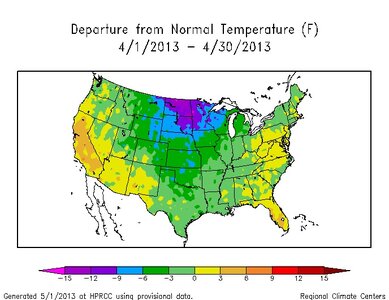Warren Faidley
Supporter
2008 and 2013 were very active
I hear what you're saying James and mostly agree.horrible - 1996, 2006 and 2018

Seems to be some pretty good agreement among Euro, GEFS and CFS of a pretty active period starting back up again around April 25 onwards.. struggling to decide if I want to start my first two week chasecation around this time as opposed to the traditional late May. Leaving myself only a week for the end of May. Would love to hear others thoughts on if that might be more ideal for this year considering peak season concerns.
Year after year it seems to be the same on this site. It seems like people always fixate on the negative. Mostly doom and gloom and most years there are several good chase days. Maybe there is not enough moisture for a super outbreak. A bare bones LP supercell in the Texas Panhandle or Colorado would suit me fine. Also if the hoards stay home, better for us.
I am sure there will be some good days somewhere, but if this pattern holds they will be probably like the last few years - not obvious well in advance, and perhaps driven by mesoscale features that are challenging to correctly forecast. I hope to get out there a few days and maybe get lucky, but overall my expectations are low.
An honest & true appraisal from Warren; experience proves this.The NCEP Ensembles are always a humble reminder of the insanity after about 7-8 days.
I do understand your plight, James. It’s no secret, there’s less tornado days, days on which tornadoes occur. And outbreaks generate the larger numbers for a single day, maybe two, that boost the yearly count. It's happening this year, too....a very short window of opportunity (especially for a chase vacationer)...
So, outbreaks account for a major part of the equation. But as I thought about some exceptions, I thought of Colorado with upslope flow where John or Tony might chase, or perhaps coastal locations such as Florida or the Carolinas affected by the sea-breeze front....main chase territory is in the southern high plains...
Satisfaction-wise, many of us have already seen a whole lot. And bear with me here, but I think for a lot of people, they desire more, better, bigger, stronger, different, closer. My personal exception would be hail; Vivian, SD was more than enough for me!A bare bones LP supercell in the Texas Panhandle or Colorado would suit me fine.
Fine Buddhist wisdom, for sure. But, also best to keep an open mind. I know a night chaser who begged off of the Greensburg, KS setup even after I mentioned to him to wait for new cell production from thunderstorm outflow. And some might know someone that called off afternoon chasing in eastern KS before the Joplin, MO tornado. So, what’s my point? It’s like faith; you’ve got to believe in things you cannot see yet....best to keep expectations low.
James, I am right there with you. I live in Phoenix AZ. I started going out to the central plains in 1997. I have only missed 2 years. I drive out in my chase truck. I have been a hairstylist for over 30 years so I have a huge clientele. When I see something that is forecasted for a couple days or more I head out. I have to start moving clients at that point which is a freaking nightmare.Guilty as chargedI think it’s unavoidable, when you love something so much, look forward to it all year, have so much invested (time, money, emotion) in a very short window of opportunity (especially for a chase vacationer), you just know that there is (generally) more downside than upside, and you could easily have to wait another whole year to try again, during which a myriad of things could happen that keep you from chasing next time.
Having said that, I agree that an outbreak is not necessary for a good trip. I don’t even necessarily want one. Parameters on outbreak days tend to create issues with storm mode, speed of motion, and even storm selection. I can’t even remember the last time I saw a skeletal, barber pole LP, and would be perfectly content with that over a classic tornadic supercell on a given day, though it probably wouldn’t satisfy me for the season. A sloshing dryline with multiple consecutive days of action sure would be nice, but the threat of a death ridge or northwest flow pattern during a chase vacation (or longer) is real.
I was hoping that my remote work arrangement would allow me to make shorter, more frequent trips this year, but for me that involves flights, meaning I need a pretty high degree of confidence in advance to justify the time and expense of heading out to the Plains. I’m still planning my “core” chase trip for a little over two weeks late May / early June, but any additional trips before or after may not be viable if this scenario unfolds.
Definitely best to keep expectations low. Expect the downside, and you avoid disappointment, while leaving yourself only upside.
...I agree that an outbreak is not necessary for a good trip...
